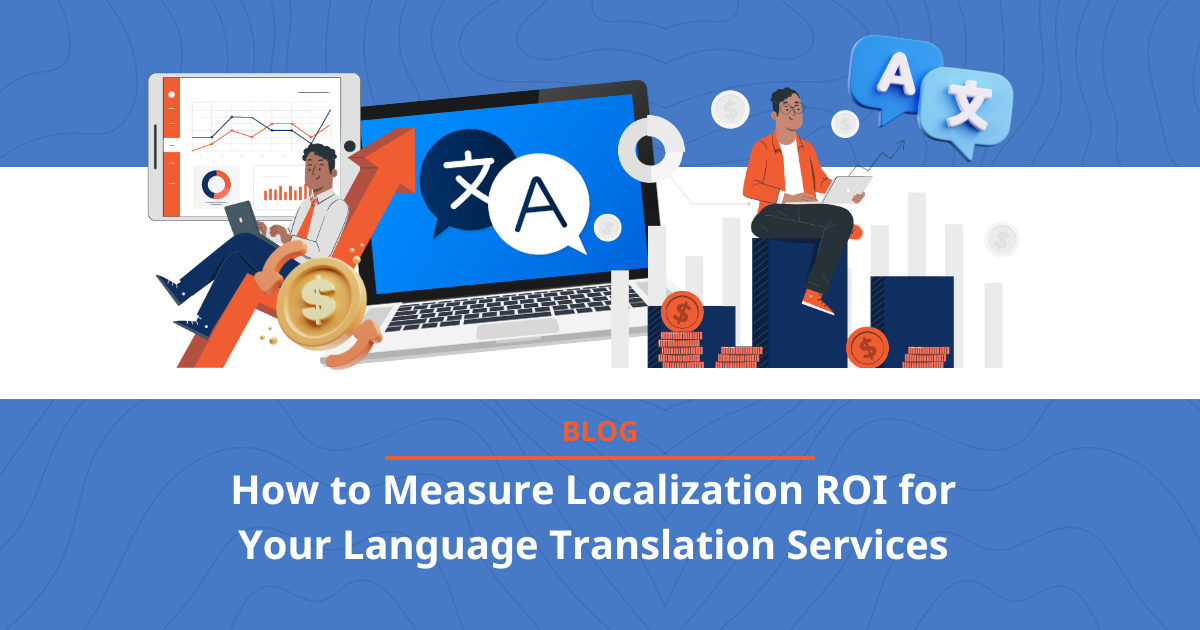Companies aren’t just building up anymore; they’re building out. There’s never been a better time to expand your business reach by tapping into the global market, and putting money toward language translation solutions can help you get there—but that’s just the first step. Localization must come next, or else you may be missing out on the bigger picture.
Localization is not what you say, but how you say it. It helps you to adapt global content to local customs, norms, and slang while avoiding embarrassing cultural taboos.
How can you be sure that localization solutions are worth the investment? The simple answer is that you need to begin setting goals and tracking metrics related to your language translation services. Understanding these metrics will help you plan for the future of your business.
At ULG, we’ve seen scores of success stories firsthand and want to help you get there, too. Take a look at these four easy steps you can take to improve your language services and ensure you’re meeting revenue targets.
1. Define your goals and KPIs.
Begin by defining your goals and key performance indicators (KPIs) so you can build a firm foundation. Get to know your customer base better by researching the following information:
- Average revenue per user and monthly recurring revenue
- Customer acquisition cost
- Customer retention and churn rate
- Lifetime value
- Product login and usage
You also want to monitor your efficiency by tracking the following important metrics:
- Conversion rate
- Bounce rate
- Behavior flow and page path
Then get specific about customer demographics as it relates to language translation services by answering the following questions:
- Which languages do customers speak?
- How often are languages requested that you don’t yet have the resources to accommodate?
- In which parts of the world do you hope to expand your business the most? As a result, where will you need to focus future localization efforts?
2. Develop your strategy.
Now that you have a clear vision of your current customer base and language services, think about where you’re headed next. It’s time to roll up your sleeves and get to work developing a strategy for long-term customer satisfaction that also maximizes revenue streams for your business.
Airbnb offers an example of localization strategy done right. Devoting special attention to the user experience in terms of default listing language, localized sign-ups, and an expanded set of accepted currencies, Airbnb prioritized localization and further expanded their market share.
Companies like Airbnb keep their eye on localization ROI, without dropping the ball when it comes to performance, accuracy, engagement, and customer satisfaction. If you’re looking to borrow a page from that playbook, engaging a language solution partner (LSP) can help you get there.
LSPs are not only experts when it comes to localization, translation, and interpretation, but they also know how to help businesses get the best bang for the buck. In fact, ULG helped one manufacturing and technology company cut localization costs by up to 30 percent thanks to automated content workflow and decreased time to market.
3. Establish a process for measuring success.
As you start to incorporate language localization, how can you be sure your efforts are impacting your bottom line? The best way is to track incremental progress of ROI as you continue to lean into localization and language translation services.
You can take a look at the language services success of both web and mobile applications. In the case of mobile applications, begin by tracking downloads and breaking down metrics by each source’s country and language of origin. The same can be done for a website, based on web traffic and according to the same breakdown of user demographics.
You can also think of success in terms of revenue by channel. Need help coming up with a strategy? This is another place where LSPs can step in. Identify an LSP that can meet the demands of your customers based on regional and linguistic demographics of customer base and web traffic.
4. Refine your reporting and optimization for the future.
Now let’s get down to the numbers. Beyond anecdotal success, you’ll want to measure the lasting impacts of ROI by simply crunching the numbers. In order to do so, you should include metrics such as:
- Page views and time on site
- Social KPIs
- Email and newsletter subscriptions
- Customer retention and satisfaction
- Cost savings
The impact of localization on your ROI today is important, but don’t lose sight of the road ahead. There’s no better way to improve the user's experience and stay ahead of the competition in the long run. While you’re winning the race in your industry, you’ll have a chance to expand markets and build a wider customer base.
Ultimately this should be a collaborative effort between you and your LSP—which just so happens to be ULG's sweet spot. We’re here to help you work toward your ROI goals while meeting the evolving needs of your multilingual customers. It’s never too late to get started. Contact ULG to learn more today.

